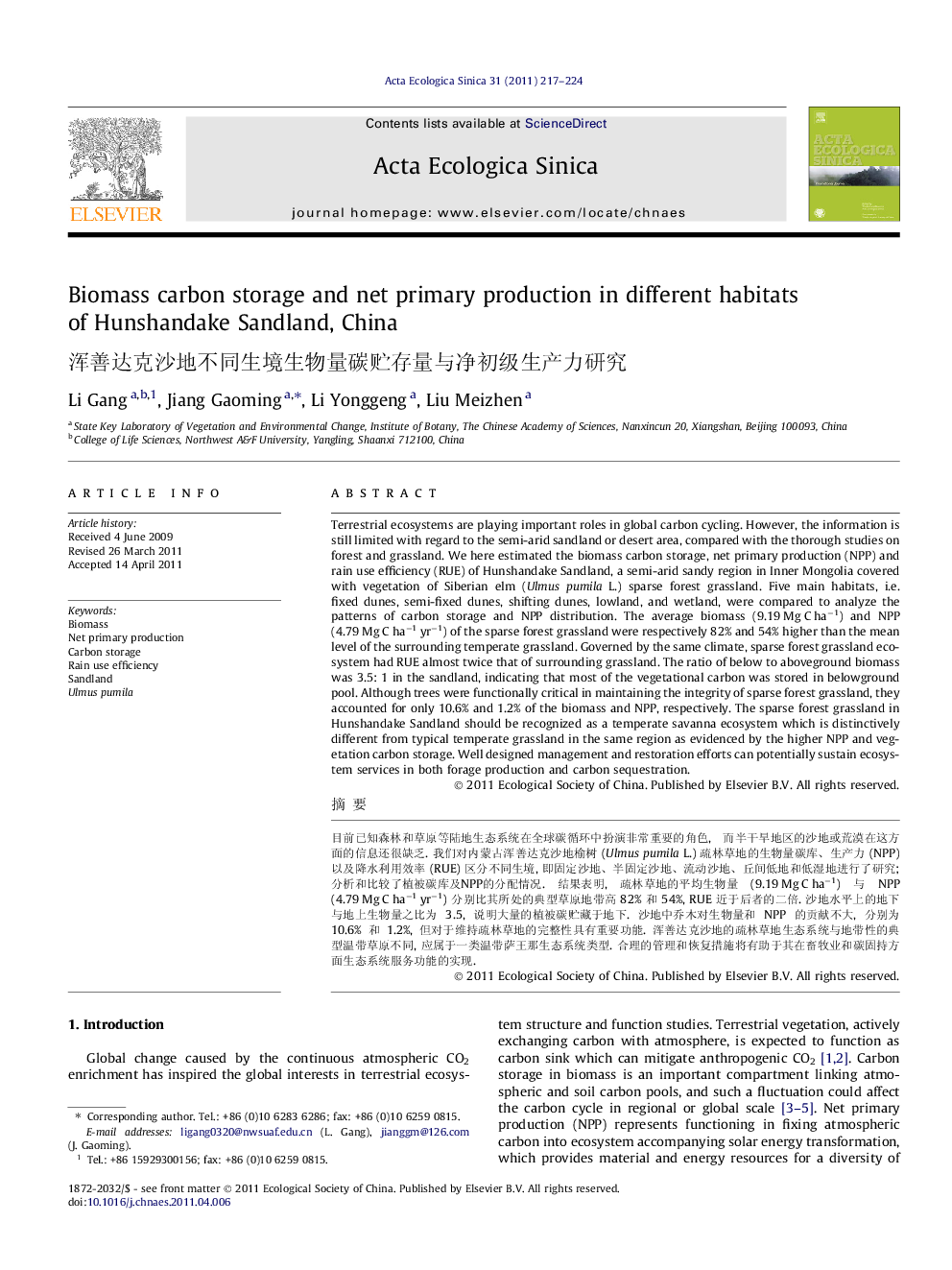| Article ID | Journal | Published Year | Pages | File Type |
|---|---|---|---|---|
| 4380102 | Acta Ecologica Sinica | 2011 | 8 Pages |
Terrestrial ecosystems are playing important roles in global carbon cycling. However, the information is still limited with regard to the semi-arid sandland or desert area, compared with the thorough studies on forest and grassland. We here estimated the biomass carbon storage, net primary production (NPP) and rain use efficiency (RUE) of Hunshandake Sandland, a semi-arid sandy region in Inner Mongolia covered with vegetation of Siberian elm (Ulmus pumila L.) sparse forest grassland. Five main habitats, i.e. fixed dunes, semi-fixed dunes, shifting dunes, lowland, and wetland, were compared to analyze the patterns of carbon storage and NPP distribution. The average biomass (9.19 Mg C ha−1) and NPP (4.79 Mg C ha−1 yr−1) of the sparse forest grassland were respectively 82% and 54% higher than the mean level of the surrounding temperate grassland. Governed by the same climate, sparse forest grassland ecosystem had RUE almost twice that of surrounding grassland. The ratio of below to aboveground biomass was 3.5: 1 in the sandland, indicating that most of the vegetational carbon was stored in belowground pool. Although trees were functionally critical in maintaining the integrity of sparse forest grassland, they accounted for only 10.6% and 1.2% of the biomass and NPP, respectively. The sparse forest grassland in Hunshandake Sandland should be recognized as a temperate savanna ecosystem which is distinctively different from typical temperate grassland in the same region as evidenced by the higher NPP and vegetation carbon storage. Well designed management and restoration efforts can potentially sustain ecosystem services in both forage production and carbon sequestration.
摘要目前已知森林和草原等陆地生态系统在全球碳循环中扮演非常重要的角色, 而半干旱地区的沙地或荒漠在这方面的信息还很缺乏. 我们对内蒙古浑善达克沙地榆树 (Ulmus pumila L.) 疏林草地的生物量碳库、生产力 (NPP) 以及降水利用效率 (RUE) 区分不同生境, 即固定沙地、半固定沙地、流动沙地、丘间低地和低湿地进行了研究; 分析和比较了植被碳库及NPP的分配情况. 结果表明, 疏林草地的平均生物量 (9.19 Mg C ha−1) 与 NPP (4.79 Mg C ha−1 yr−1) 分别比其所处的典型草原地带高 82% 和 54%, RUE 近于后者的二倍. 沙地水平上的地下与地上生物量之比为 3.5, 说明大量的植被碳贮藏于地下. 沙地中乔木对生物量和 NPP 的贡献不大, 分别为 10.6% 和 1.2%, 但对于维持疏林草地的完整性具有重要功能. 浑善达克沙地的疏林草地生态系统与地带性的典型温带草原不同, 应属于一类温带萨王那生态系统类型. 合理的管理和恢复措施将有助于其在畜牧业和碳固持方面生态系统服务功能的实现.
